How to manage kidney disease on the low FODMAP diet
Posted on May 25, 2022

What do the kidneys do?
The kidneys are an important organ. They are responsible for removing excess waste and fluids from your body. Although that is their main function, they do so much more, such as, release hormones, create vitamin D and control the production of red blood cells.
This all helps to keep everything in your body stable.

What if your kidneys aren’t working as they should?
The kidneys may be affected by diseases sometimes which may lead to them not working as efficiently as they should. There are diseases which may impact the kidneys and may lead to chronic kidney disease (CKD). However, some people may be born with an abnormality that can affect their kidneys.
There are also some factors that can increase your risk of developing kidney disease. These include having diabetes, having high blood pressure, and having a family member who has chronic kidney disease. Additionally, as you age your risk of developing kidney disease may also increase.
Particular blood test results are used to diagnose kidney disease, if you are concerned speak with your doctor about getting tested.
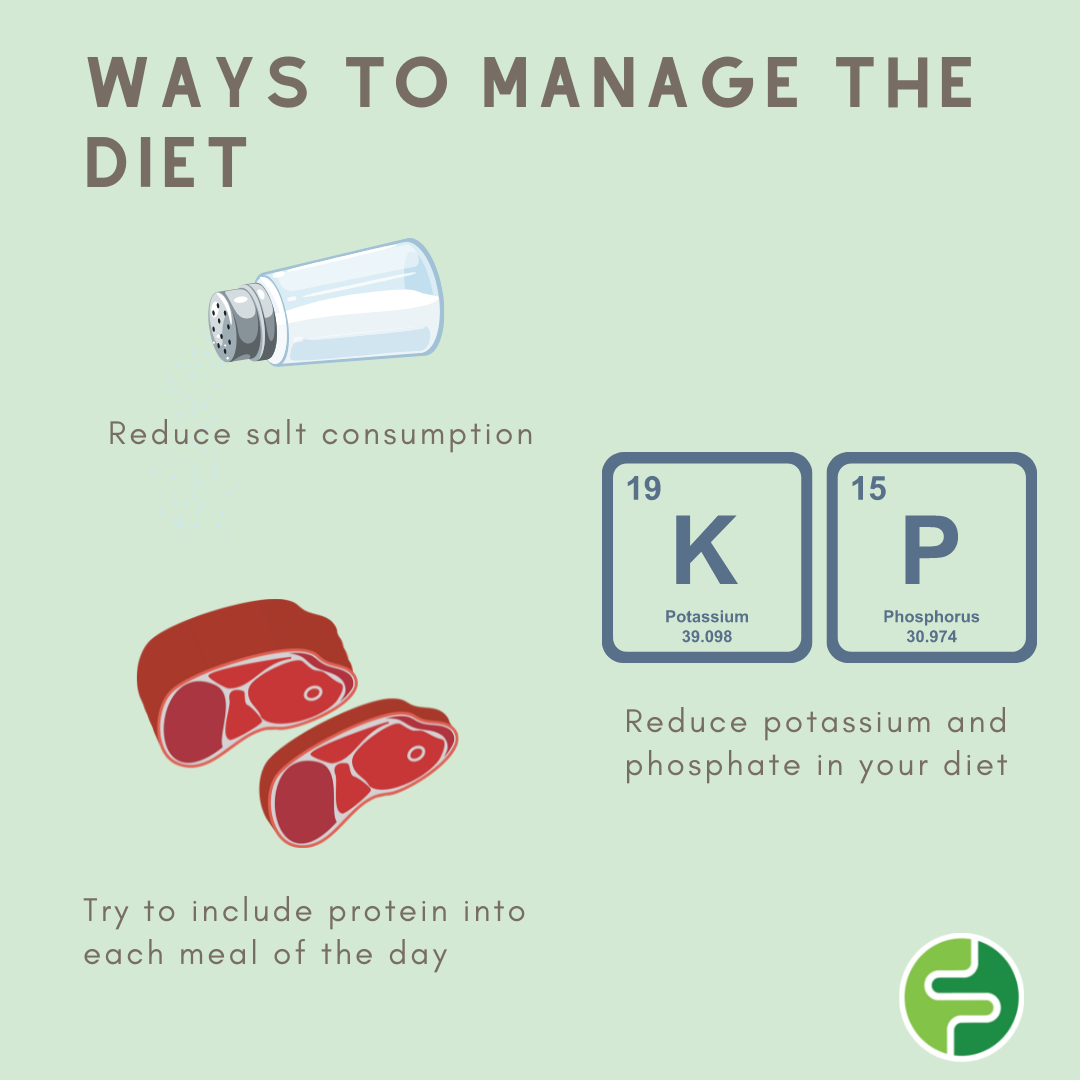
The diet
If you have kidney disease, your kidneys are less effective in doing their job of filtering/removing unwanted fluids and managing correct levels of nutrients; you have to do most of the work for your kidneys through nutrition and diet.
If you have kidney disease you may have been told to reduce or increase your intake of certain foods or nutrients, these usually include protein, salt, potassium, and phosphate.
So how do you manage this if you’re ALSO on a low FODMAP diet?
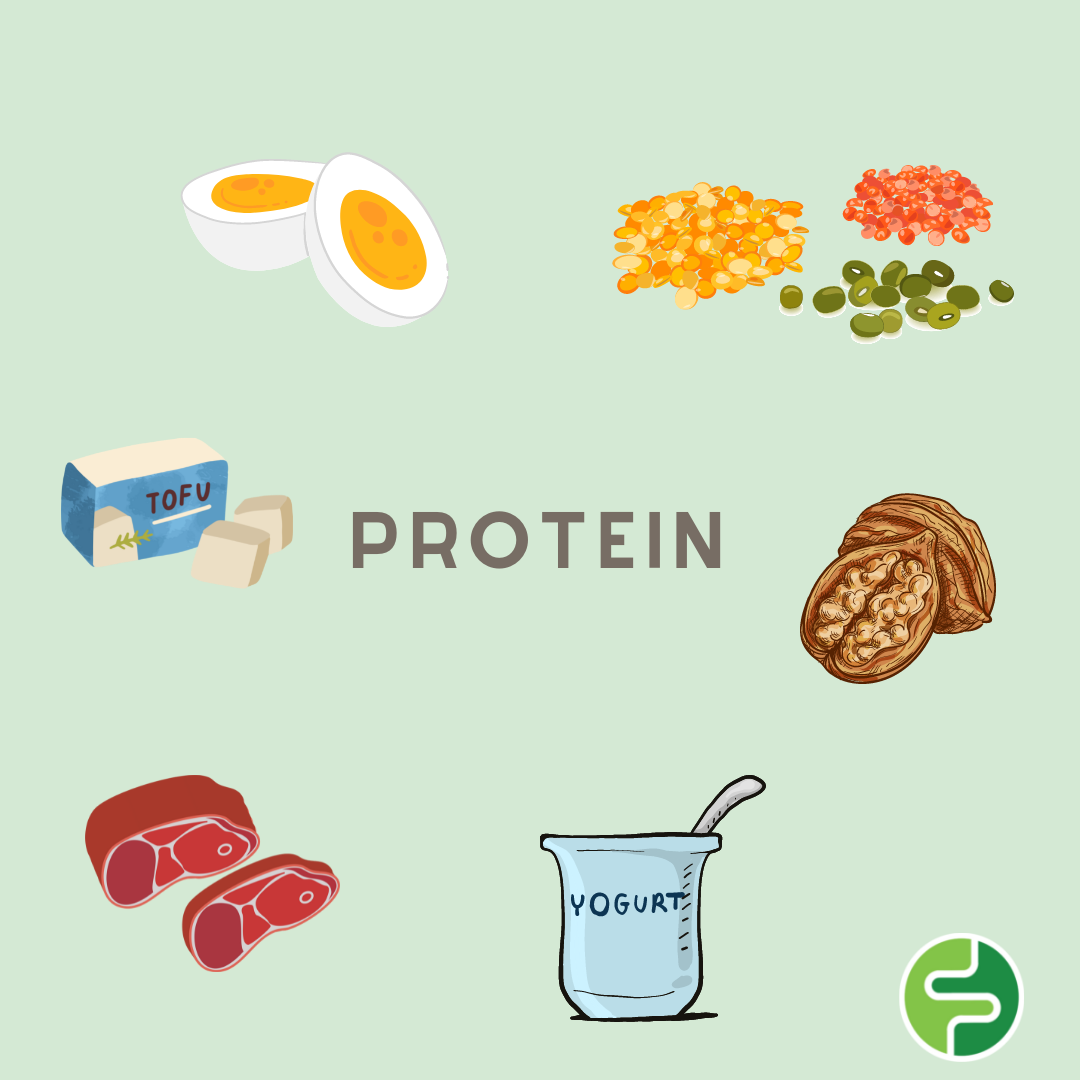
Protein
Often protein needs to be increased, luckily many animal-based protein sources are low FODMAP. However, plant-based options include firm tofu, nuts and seeds, lentils, eggs, and yoghurt.
Use the FODMAP Friendly app to find low FODMAP serving sizes of these foods.
To increase your protein intake, it may be beneficial to space your protein intake throughout the day, meaning you should try to include protein sources in each meal. It is important not to eat all your protein in one sitting as your body can only absorb a certain amount at one time.

Salt
Salt often needs to be decreased as your kidneys may not be able to remove the excess. Sometimes, your body may show signs of this such as swelling in the ankles, feet and hands, shortness of breath and puffy eyes. However, these symptoms may also be due to a different cause, so speak with your doctor if you have noticed any of these occurring regularly.
Eating too much sodium (or salt) may also increase your blood pressure and as discussed, this may increase your risk of developing CKD.
To reduce your salt intake, choose low salt foods. This means when shopping, look for products labelled “low salt,” “reduced salt” or “no added salt.” Additionally, look out for “hidden” forms of salt from packages foods and sauces for example. Salt can also be found in low FODMAP foods such as meats, some cheeses and olives.
Additionally, aim to season your foods with herbs, spices, and infused olive oils to have flavour in your food without added salt, these options are also low FODMAP.
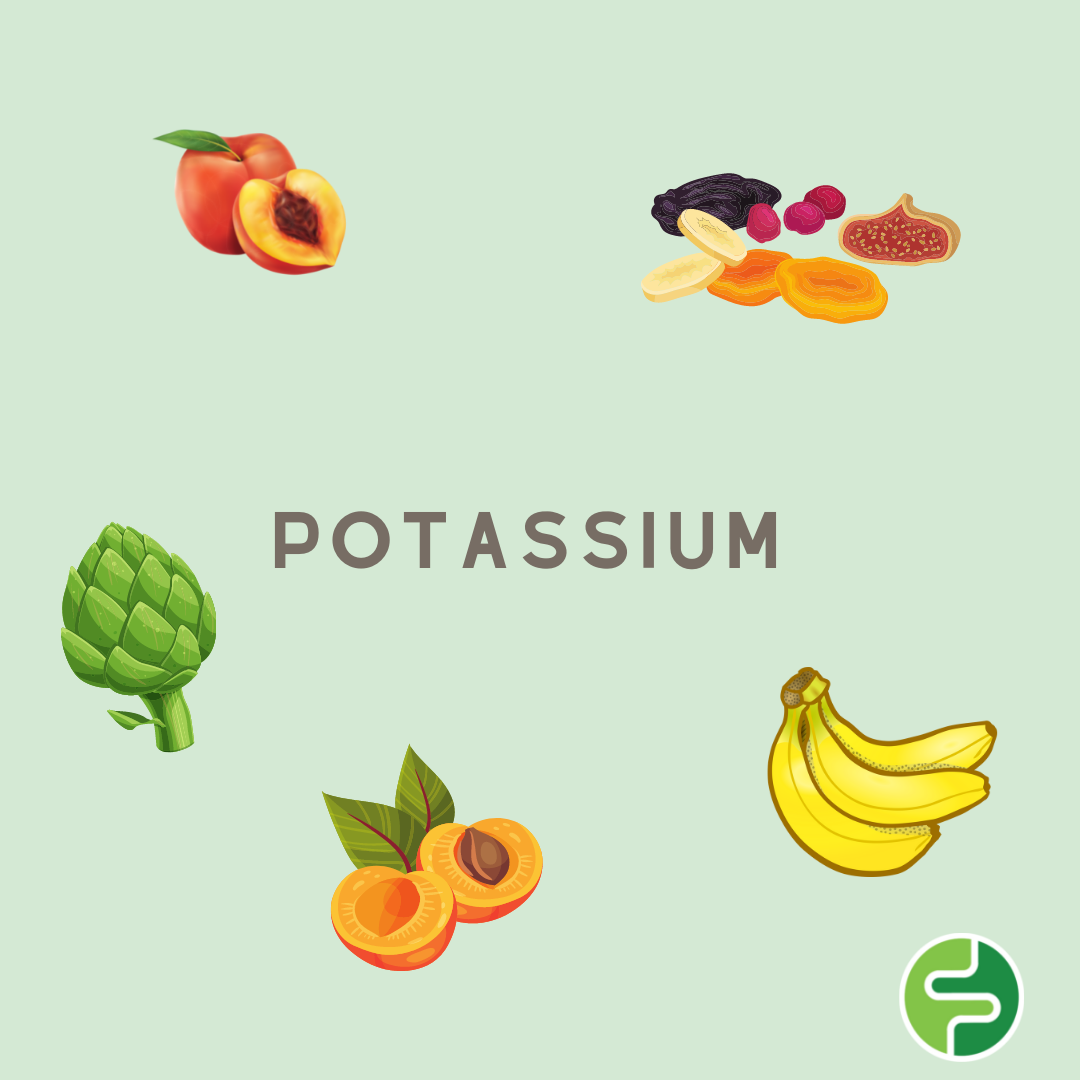
Potassium
Potassium may build up in your in your blood if your kidneys aren’t able to filter as they should. High levels of potassium may result in heart problems. Therefore, potassium intake may need to be decreased.
So, what is potassium and where is it found?
Potassium is a mineral that cannot be tasted but is found in many different foods such as some fruit and vegetables, some grain foods and often foods that have a dark brown colour such as coke, chocolate, Vegemite, Worcestershire sauce, and coffee.
How to reduce your intake of potassium
Many fruits and vegetables that are have high levels of potassium are also high in FODMAPs such as mango, apricot, dried fruit, and artichoke. However, some are low FODMAP such as unripe bananas and white nectarine.
Tips to include these low FODMAP foods without excess potassium include peeling fruits and vegetables, boiling vegetables well, and draining the juice from tinned fruits.
Additionally, limit your intake of foods that are high in potassium such as the dark brown foods.
Seek a dietitian for a more personalised and detailed advice.
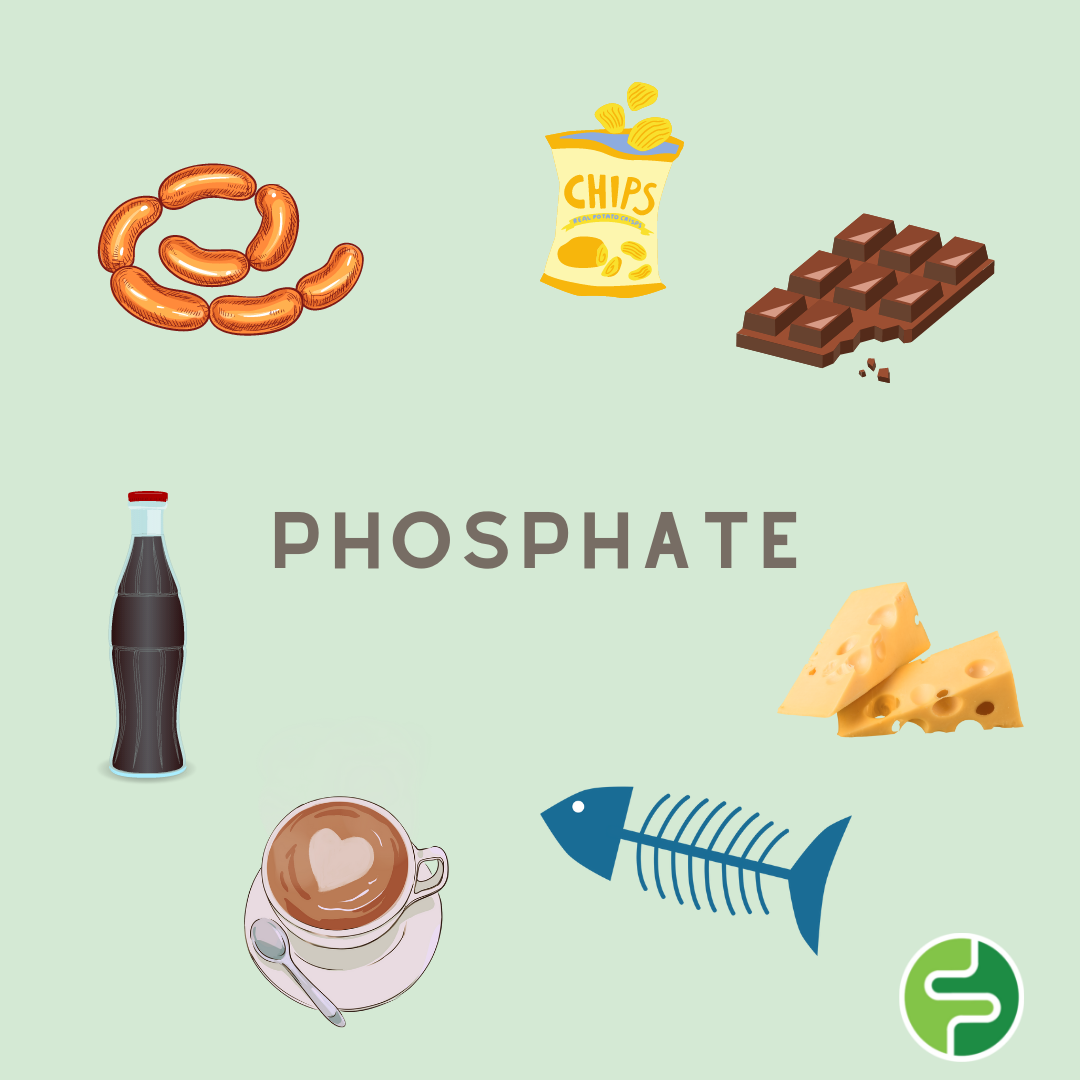
Phosphate
When your kidneys are not working effectively, excess phosphate cannot be removed from the body. The excess phosphate can pull calcium out of your bones making them brittle and weak.
Similarly, to potassium, phosphate is also a mineral found in a variety of foods such as some dairy products, processed and some cuts of meat, some fish, and some confectionary foods and drinks.
If you need to limit phosphate; aim to reduce your intake of high phosphate foods by:
• Choosing lean meats (e.g., chicken and beef) over processed and packaged meats (e.g., ham and bacon).
• Choosing tinned tuna or salmon and white fleshed fish over darker fleshed fish or fish with edible bones as these are higher in phosphate.
• Many meat alternatives that are low phosphate are also low FODMAP such as eggs, tofu (100g) and lentil (75g). However, there are some which are higher in phosphate such as some nuts and seeds so limit the high phosphate foods.
• Unfortunately, dairy products that are naturally lower in FODMAPs such as hard cheeses are high in phosphate. Therefore, choose low phosphate AND low FODMAP dairy products such as lactose free milk and yoghurt. See the range of certified low FODMAP dairy options on the FODMAP Friendly app.
• Additionally, confectionary foods should be limited as many contain high levels of phosphate.
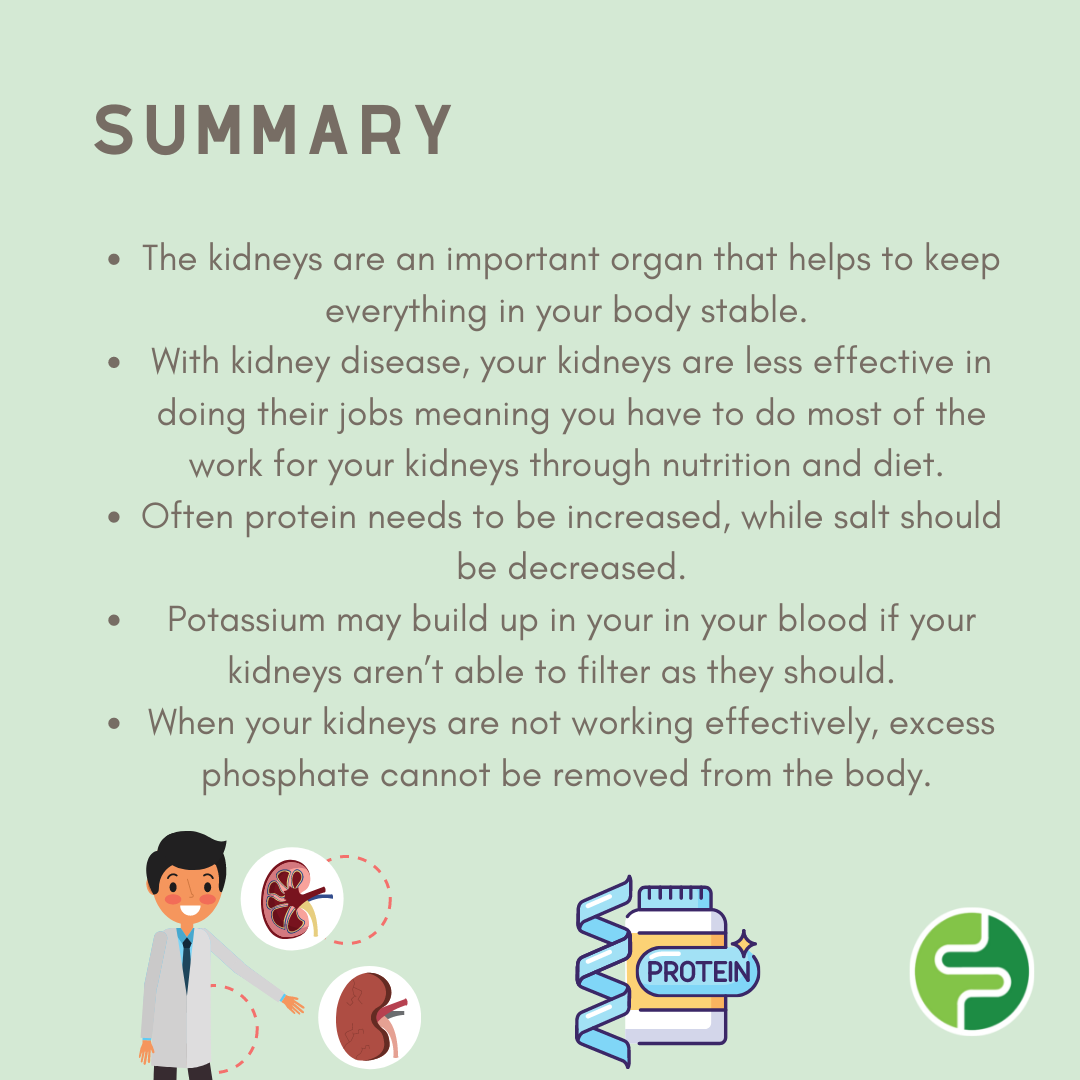
Summary
It is important to enjoy all foods and have variety in your diet. Managing both a CKD and low FODMAP diet may be very restrictive and difficult to navigate. It may also be very stressful and make eating out difficult.
This in-turn may even trigger some IBS symptoms as navigating two challenging conditions may affect physical, emotional, social, and professional wellbeing. Therefore, it is very important to work with a FODMAP-trained Accredited Practising Dietitian to manage both kidney disease and IBS together as a dietitian can work with you to identify which foods and habits are causing trouble.
See a dietitian to learn healthy eating strategies and enjoy the foods you like, without pain.
Written by: Ijmeet Maan, Accredited Practising Dietitian







